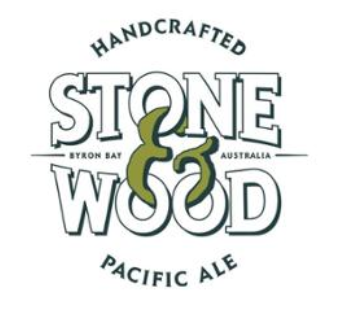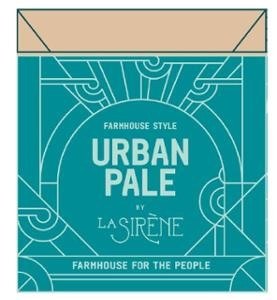Distinctive to descriptive: trade mark considerations in the Australian beer industry
20 July 2020
The Federal Court’s judgments in Urban Alley Brewery Pty Ltd v La Sirene Pty Ltd[1] and Stone & Wood Group Pty Ltd v Intellectual Property Development Corporation Pty Ltd[2] provides a warning to craft brewers that fail to strike a balance between descriptiveness and distinctiveness in choosing sub-brands for their beers.
The wide variety of craft beers available in Australia attests to the creativeness of its makers. A new range calls for a new name, often followed by a desire to monopolise it. But the creative energy used in mixing barley, hops and yeast with water does not always carry over into the name creation process.
Names often contain descriptive elements or emotive words that are chosen to reflect the origin or backstory of the brewery, often resulting in a name that is difficult to monopolise because it is insufficiently distinctive. The purpose of a trade mark is (or should be) to denote origin – the more distinctive a trade mark is, the easier it is for it to perform that function. At the other end of the spectrum, a more descriptive trade mark is less likely to easily perform the function of denoting origin because others may want to honestly describe products in the same or similar way.
Beyond the pale
In 2013, Coopers Brewery (Coopers) lodged an application to register the trade mark ‘Original Pale Ale’ for beer. This application followed Coopers’ previous attempt in 2003 to register the same trade mark, ‘Original Pale Ale’ for beer (and other associated goods), which was ultimately not accepted by IP Australia.
Coopers’ later application to register the Original Pale Ale mark resulted in a clash between some of Australia’s biggest breweries, Carlton & United Breweries, Asahi, Lion and Thunder Road, as they each opposed Coopers’ application to register the Original Pale Ale mark. Although the oppositions proceeded to a hearing before IP Australia in 2016 (with the exception of Thunder Road’s opposition), Coopers’ trade mark application was ultimately withdrawn before a decision was handed down.
Descriptive trade marks in a crowded market
The trade mark application stage is not the only time at which distinctiveness is an issue. It may again become relevant at the enforcement stage. Trade mark registrations consisting of less distinctive marks are often inherently weak as they are open to attack on the basis that they are insufficiently distinctive.
The argument is that such a mark should therefore never have been registered to provide the monopoly its owner is seeking to enforce. It is also possible that an initially distinctive mark can become less distinctive as others adopt it in a descriptive manner. Rather than being able to seek relief against an alleged infringer, the trade mark owner may instead end up without the coveted trade mark registration.
Ales from the Pacific
In 2015, Stone & Wood commenced proceedings against Elixir, the producer of the ‘Thunder Road Pacific Ale’ beer (renamed ‘Thunder Road Pacific’ in 2015) for passing off, misleading or deceptive conduct, false or misleading representations and trade mark infringement of its ‘Stone & Wood Pacific Ale’ trade mark (Stone & Wood Mark).

Stone & Wood had been producing its Stone & Wood Pacific Ale displaying the Stone & Wood Mark since 2010. The word ‘Pacific’ had been chosen by Stone & Wood for the ‘calming, cooling emotional response’ it generates and for its relevance to the origin story of the Stone & Wood brewery.
The Court’s findings
Stone & Wood’s claims failed in the first instance. Furthermore, the primary judge found the ‘Pacific Ale’ element of the Stone & Wood Mark to be descriptive. His Honour stated that:
“by choosing a name for its product that has a descriptive aspect to it, Stone & Wood ran the risk that others in the trade would use it descriptively and that it would not distinguish its product.”
As a result of the dominance of the ‘Stone & Wood’ branding on the labelling, packaging and marketing of its Pacific Ale products, His Honour found that:
“there is reason to think that some or many consumers will recognise or identify the name ‘Stone & Wood’ or the composite expression ‘Stone & Wood Pacific Ale’ rather than the words ‘Pacific Ale’ on their own. This makes it less likely that the words ‘Pacific Ale’ on their own would distinguish Stone & Wood’s product from the products of others.”
On appeal (after its claims were narrowed to the tort of passing off, false or misleading representations and misleading or deceptive conduct), Stone & Wood failed to make out that Thunder Road’s use of ‘Pacific Ale’ or ‘Pacific’ represented to consumers that its beer was associated with Stone & Wood’s Pacific Ale.
Stone & Wood’s claim relied on a finding that Stone & Wood had a distinctive reputation in the words ‘Pacific Ale’ and ‘Pacific’ and that Elixir, therefore, intended to take advantage of the success of Stone & Wood’s product to sell its own.
Although the word ‘Pacific” had not been descriptive of a style of beer when Stone & Wood had launched its Pacific Ale product, by the time Stone & Wood brought its action in 2015, the words ‘Pacific Ale’ did not distinguish Stone & Wood’s beer from the beers of other producers. The word ‘Pacific’ had come to ‘serve a function of describing beers made from hops from Australia and New Zealand’.[3] When ‘Thunder Road Pacific Ale’ came onto the Australian beer scene in 2015, it was soon to be one of a number of beers bearing the words ‘Pacific’ or ‘Pacific Ale’, such as Garage Project’s Hapi Daze Pacific Ale, the Pacific Beverages Radler and Yeastie Boys’ Stairdancer Pacific Ale.
The Full Court agreed with the primary judge’s finding that Stone & Wood’s reputation lay in the phrase ‘Stone & Wood Pacific Ale’ brand, in which the words ‘Pacific Ale’ were being used as a descriptor. Stone & Wood therefore failed to prove that it had a substantial reputation in the phrase ‘Pacific Ale’ alone.
What Urban Ales you?
In the more recent case of Urban Alley Brewery Pty Ltd v La Sirene Pty Ltd, Urban Alley Brewery suffered a similar fate as Stone & Wood.
Urban Alley Brewery (Urban Alley) commenced proceedings against La Sirene for infringement of its ‘Urban Ale’ trade mark (amongst other claims). The complaint was levelled against La Sirene for its use of ‘Urban Pale’ in its ‘Farmhouse Style Urban Pale by La Sirene’ word mark and label mark (Urban Pale Marks). In response, La Sirene brought a number of claims and sought an order cancelling the Urban Ale mark,[4] including on the basis that the Urban Ale trade mark was not capable of distinguishing Urban Alley’s products (for which the mark was registered) from the goods of its rivals.[5]

At the time Urban Alley's Urban Ale mark was filed in June 2016, other beers bearing the name ‘urban’ were already on the market, namely Tiny Rebel Urban IPA and Belgian Urban IPA products (available since 2014) and Urban Crusader lager. Further, a number of breweries used the word ‘urban’ in their business names, including Urban Brewing Company and Hopworks Urban Brewery.
The Federal Court agreed with La Sirene’s submission that Urban Alley’s use of the word ‘urban’ in its trade mark was as a ‘laudatory epithet to describe inner-city craft breweries, their beers and their target market’. The word ‘urban’ was found to have become associated with ‘craft beer products and breweries’. The Court found that it:
“does not have any particular significance in terms of beer style or flavour characteristics; that it is a very generic term used to describe the location of a brewery or its target audience; that it communicates the aesthetic of an inner-city brewery or describes the inner-city beer movement; and that it is a generic term that brewers use to describe their location or ground their beer marketing as being relevant to an inner-city consumer.”
It upheld La Sirene’s application (brought by cross-claim) to have the Urban Ale mark cancelled on the basis that the Urban Ale mark was not capable of distinguishing its owners goods.[6] An order requiring the cancellation of the Urban Ale trade mark was subsequently made in Urban Alley Brewery Pty Ltd v La Sirene Pty Ltd (no 2),[7] when Justice O’Bryan was again required to preside over this matter due to the parties’ inability to establish agreed orders.
One for the road
Ultimately, the key take away from these recent proceedings was neatly summarised by Stephen J in Hornsby Building Information Centre Pty Ltd v Sydney Building Information Centre Ltd[8] more than four decades ago:
“There is a price to be paid for the advantages flowing from the possession of an eloquently descriptive trade name. Because it is descriptive it is equally applicable to any business of a like kind, its very descriptiveness ensures that it is not distinctive of any particular business and hence its application to other like businesses will not ordinarily mislead the public. In cases of passing off, where it is the wrongful appropriation of the reputation of another or that of his goods that is in question, a plaintiff which uses descriptive words in its trade name will find that quite small differences in a competitor's trade name will render the latter immune from action.”[9]
[1] [2020] FCA 82.
[2] [2018] FCAFC 29.
[3] Full Federal Court at [38] citing the findings of Justice Moshinsky in Stone & Wood Group Pty Ltd V Intellectual Property Development Corporation Pty Ltd (2016) 120 IPR 478 at [134].
[4] Under section 88(1)(a) of the Trade Marks Act 1995 (Cth).
[5] Pursuant to section 41 of the Act. La Sirene also claimed that the Urban Ale mark could have been opposed under sections 44 and 58 of the Act.
[6] The Federal Court found that La Sirene also established its ground under section 44 of the Act, which provided a further ground on which the Urban Ale mark could be cancelled.
[7] [2020] FCA 351.
[8] (1978) 18 ALR 639.
[9] Hornsby Building Information Centre Pty Ltd v Sydney Building Information Centre Ltd (1978) 18 ALR 639 at [649], citing Lord Simmonds in Office Cleaning Services Ltd v Westminster Window and General Cleaners Ltd (1946) 63 RPC 39 at [42].
Authors

Partner
Tags
This publication is introductory in nature. Its content is current at the date of publication. It does not constitute legal advice and should not be relied upon as such. You should always obtain legal advice based on your specific circumstances before taking any action relating to matters covered by this publication. Some information may have been obtained from external sources, and we cannot guarantee the accuracy or currency of any such information.



